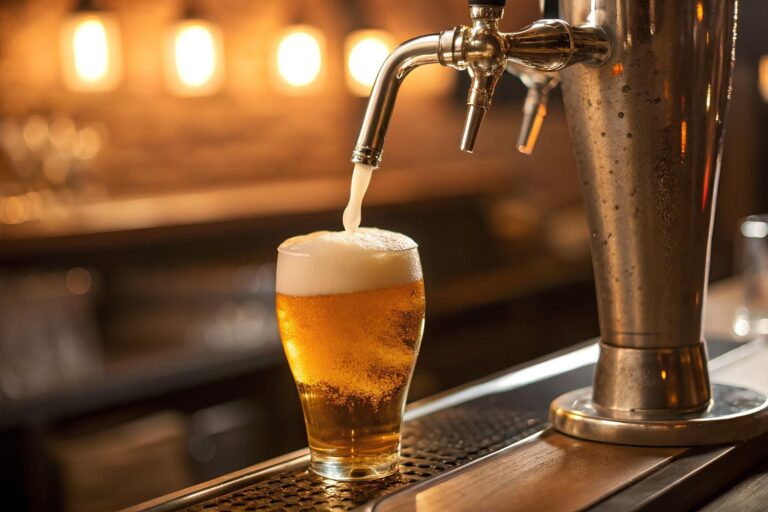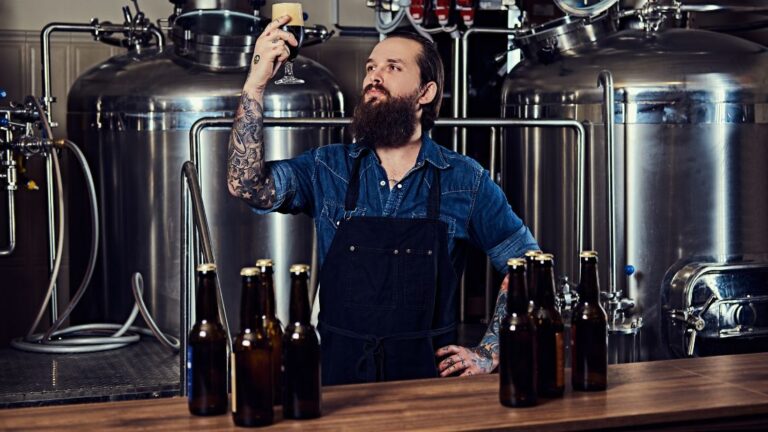Inside the Brewery Profit & Loss Statement (P&L)

Let’s be honest: the brewery profit and loss (P&L) statement might not be the most thrilling document out there.
It’s packed with numbers and terms that can seem overwhelming if you’re not familiar with accounting.
However, there’s more than meets the eye with the P&L statement. And for seasoned brewery owners, the P&L is probably one of your monthly go-to financial statements.
But if you’re still a new brewery business owner, you should know what a brewery profit & loss statement is and how to use it to make informed decisions for your brewery business.
In this post, we’ll dive into the details of the P&L statement and answer a few questions you may have around it. Let’s get started!
What You’ll Find in the Brewery Profit & Loss Statement
The P&L statement mainly shows two things: your revenues (what you earn) and your expenses (what you spend).
But to truly understand how each part affects your brewery’s bottom line, it’s important to break these down further. This way, you can see how different costs and earnings impact your overall profits.
Let’s take a closer look at the details.
Revenues
The revenue section of the brewery profit & loss statement shows all sales and other income your brewery business generated. The basic format of the revenue section looks like this:
Gross Sales | $XXX |
Sales returns & allowances | $XXX |
Sales discounts | $XXX |
Net Sales | $XXX |
- Gross sales represent the total amount of sales exclusive of any discount or return. It is simply the price of goods multiplied by the quantity sold.
- Sales returns & allowances is a contra-revenue account that directly reduces gross sales for actual and estimated product returns. Sometimes, customers may see spoiled or damaged goods and want them returned. All products returned are reported as a sales return.
- Sales discounts are reductions to the selling price you give customers to entice more sales or encourage prompt payment.
- Net sales are the revenues left after returns, allowances, and discounts.
It’s best to look at net sales when analyzing revenue numbers for conservative purposes. But if you want to look at the pure revenue-generating potential of the business before returns and discounts, analyze gross sales instead.
Cost of Goods Sold
Cost of goods sold (COGS) represents the direct costs incurred in producing all the products you sell in your brewery business. COGS is composed of the following significant items:
- Direct materials are the cost of raw materials used for production (e.g., malted barley, specialty malts, honey, corn syrup, spices, clarifying agents, yeast, hops, water, etc.).
- Direct labor is the wages and salaries of employees directly involved in brewery production (e.g., wages or salaries of brewery personnel, line workers, packaging personnel, technicians, etc.)
- Overhead is costs that cannot be directly traced to the goods produced but are necessary to keep production running smoothly (e.g., depreciation of production equipment, production supplies, waste disposal, utilities of the production facility, licenses, permits, etc.)
It’s normal for COGS to eat up most of your revenues. Usually, COGS take 40% to 60% of revenues, depending on various internal and external factors. So, it’s perfectly normal if you see your COGS around that range.
Operating Expenses
Expenses not directly related to production but essential for the business as a whole are called operating expenses. Without operating expenses, it’s impossible to run the business. For breweries, operating expenses may include, but are not limited to, the following:
- Utility expense of offices, showrooms, or events areas in the brewery premises
- Portion of rent or mortgage that’s not part of the production area
- Marketing and advertising services
- Professional fees for accountants, consultants, and lawyers
- Salaries and wages of non-production personnel (e.g., administrative staff, marketing staff, purchasing officer), including their benefits
Net Income
Net income is the ultimate measure of business performance and perhaps the first thing that most business owners look at when they check the P&L statement. When total revenues exceed total expenses, the result is net income. Otherwise, having more expenses would result in a net loss
A net loss isn’t good, but it’s normal if your business is still in its infancy. If you’re still introducing your products to customers, it’s normal to have low revenues and high expenses during the first few months of the business. However, a net loss for a business past the infancy stage isn’t typical.
So, What’s The Purpose of the Brewery P&L?
The profit & loss statement is like a report card for your brewery’s finances. Here’s where it’s useful:
Overall Performance: It shows how well your brewery is doing financially over a certain period of time.
Cash Flow: It helps you see if your business is generating enough profit to cover the company’s cash flow needs when it comes to working capital, capital investments and financing obligations.
Debt: It will help you identify whether or not you can ask a bank for additional financing support.
How Often Should You Be Checking Your Brewery Profit & Loss Statement?
You may have heard that it’s important to review your P&L statement regularly to stay on top of your brewery’s finances.
But what does everyone mean by “regularly”?
Here at U-Nique Accounting, we recommend checking it monthly. This allows you to catch any issues early and ensure you’re sticking to your budget.
Every three months, take a more detailed look to identify trends and make adjustments as needed.
And at the end of the year, review your P&L statement to get a clear picture of your overall financial health and plan for the future.
What Should You Pay Close Attention To?
First things first, focus on your revenue, which includes money from beer sales and other sources.
Next, examine the cost of goods sold (COGS) to understand how much it costs to produce your beer. This helps you assess if your production costs are aligned with your sales.
Also, pay attention to your operating expenses, like rent, utilities, and marketing. These costs can add up and affect your profits.
And finally, review your net income to see how much you’re making or losing after all expenses.
By breaking these components down, you’ll get a clearer picture of your brewery’s financial health.
Need More Help Juggling Your Brewery Finances?
Starting a brewery business is one thing. But even if you have the expertise to develop your product, you still have to take care of the less desirable aspects of having a business—accounting.
That’s where an experienced brewery accountant comes in handy.
Here at U-Nique Accounting, we’re experts in helping brewery owners manage their finances & set and achieve their financial goals.
Our team at U-Nique Accounting specializes in using Xero to provide accounting support tailored for brewery owners, from basic bookkeeping to handling your taxes. With Xero, we are able to customize your P&L to track industry specific costs/ratios so you can analyze the performance of your brewery and make timely, meaningful decisions.
If you need a better brewery accountant, schedule an introductory call below to see how we can help.
Otherwise, check out our recent blog post on Brewery Margins To Watch Closely, we think you’ll find it useful!
Until next time.

By MATT CIANCIARULO



